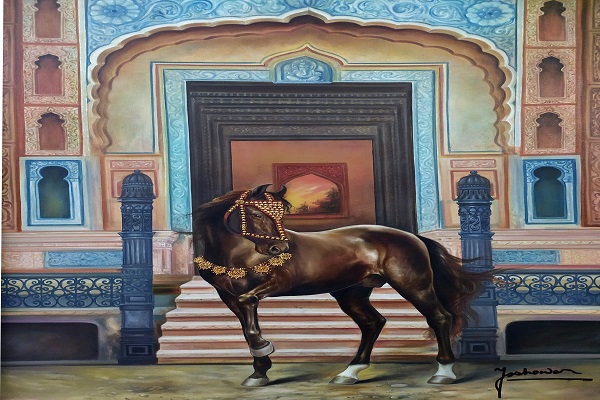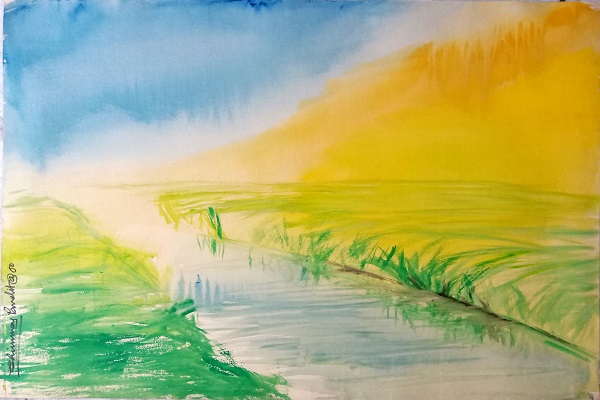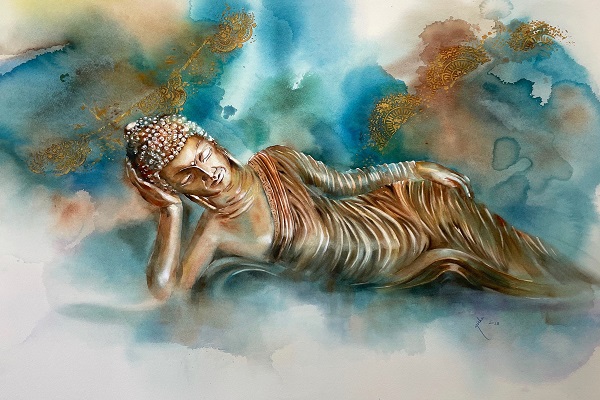
The world of visual arts encompasses a vast array of mediums and techniques, each possessing its unique attributes and charm. Among these, watercolor and oil painting stand as distinct pillars, offering artists and art enthusiasts a rich tapestry of expressive possibilities. In this discourse, we embark on a journey to explore and compare these two distinguished forms of artistic expression, with a special emphasis on oil paintings for sale.
Watercolor painting, often celebrated for its delicacy and transparency, relies on the harmonious interaction of pigments with water. Artists employ various brushwork techniques and layering methods to create intricate and ethereal compositions. The inherently fluid nature of watercolor paints allows for a spontaneous yet controlled approach, resulting in luminous artworks.
On the other hand, oil painting, renowned for its depth and richness, utilizes pigments mixed with oil, typically linseed or walnut oil. This medium grants artist the luxury of extended drying times, enabling meticulous detailing and blending. Oil paintings exude opulence and durability, making them a sought-after choice among art collectors and enthusiasts worldwide.
Understanding the comparative attributes of watercolor and oil painting is not merely an exercise in artistic scholarship. It carries profound significance in guiding artists in their choice of medium and technique, and it informs art collectors and aficionados of the distinct characteristics that define these two forms. Additionally, this exploration delves into the practical realm of oil paintings for sale, offering valuable insights into the art market's dynamics. By undertaking this comparative analysis, we aim to foster a deeper appreciation of these art forms and provide a nuanced perspective for both creators and connoisseurs alike.
All You Need to Know About Watercolor Painting

Watercolor painting, celebrated for its distinctive qualities, is characterized by its transparent nature and luminous effects. Artists employ watercolor pigments, which are typically water-soluble and composed of finely ground pigments suspended in a gum Arabic solution. This unique composition allows for the blending and layering of colors with remarkable fluidity and delicacy. Watercolorists often use techniques such as wet-on-wet, wet-on-dry, and dry brushing to achieve varying textures and visual effects.
The spontaneity inherent to watercolor requires artists to work swiftly and decisively, as the medium can be unforgiving of errors due to its transparent nature. Its unfixed nature demands precision and control, making it a medium cherished for its expressive potential.
Watercolor's advantages lie in its luminosity and the ease with which it captures the essence of a subject. Its portability and minimalistic requirements make it a favorite among plein air painters. However, its transparency can pose challenges, as corrections are difficult once applied. This limitation, along with the inherent fragility of paper surfaces, necessitates careful handling and preservation.
Watercolor paintings offer collectors an alternative, often more affordable option while still showcasing artistic mastery. Their luminous charm and unique qualities continue to enchant both artists and art enthusiasts, preserving their enduring appeal in the world of fine art.
Interesting Blog: An Easy Guide to Watercolor Portrait Painting
All You Need to Know About Oil Painting

Oil painting, renowned for its opulence and versatility, stands as a distinguished medium in the realm of visual arts. This technique employs pigments mixed with oils, predominantly linseed or walnut oil. The primary characteristic of oil paintings is their extended drying time, allowing artists the luxury of meticulous detailing and blending. Artists often work in layers, creating depth and luminosity in their compositions through the layering of translucent glazes and impasto applications.
Oil painting techniques encompass a wide range of styles and approaches, from the classical realism of the Old Masters to the bold and innovative techniques of modern and contemporary artists. Artists may choose to use brushes, palette knives, or even their fingers to manipulate the paint, creating textures and visual effects unique to the medium.
Oil painting offers numerous advantages, including its longevity and durability. These paintings can withstand the test of time, retaining their vibrancy and integrity for centuries. The extended drying time provides artists with unmatched control over their work, allowing for corrections and refinements. Oil paintings also possess a rich and tactile quality that appeals to collectors, making them highly sought-after items in the market of oil paintings for sale.
However, oil painting also presents limitations, such as the need for proper ventilation due to the solvents used for cleaning brushes and thinning paint. The drying time can be a drawback for artists seeking a quicker turnaround. Additionally, the cost of materials and the expertise required to master the medium can be substantial. Despite these challenges, oil painting remains an enduring and cherished form of artistic expression, appreciated for its depth, luminosity, and historical significance.
Read More: Presenting Watercolor Paintings as Meaningful Gifts
Comparing Watercolor and Oil Painting

One of the foremost distinctions between watercolor and oil painting lies in the materials and tools employed. Watercolor relies on water-soluble pigments and paper, while oil painting utilizes pigments mixed with oils on canvas or other surfaces. This contrast extends to the tools used, with watercolorists employing brushes designed for their medium, and oil painters favoring brushes and palette knives suited to oils. The choice of materials and tools significantly influences the handling and outcome of each artwork, affecting the creative process and final result.
The aesthetics and visual effects achieved in watercolor and oil painting diverge strikingly. Watercolor is celebrated for its luminosity, transparency, and ethereal qualities, often producing delicate and vibrant compositions. In contrast, oil paintings are characterized by their depth, richness, and the ability to create intricate details, resulting in opulent and textured artworks. The choice between these two mediums profoundly impacts the overall aesthetic of a piece, making it a pivotal consideration for artists and collectors alike, particularly when exploring options for oil paintings for sale.
Both watercolor and oil painting demand varying levels of skill and present unique learning curves. Watercolor necessitates precision and control due to its unforgiving nature, making it suitable for artists seeking a challenge. Oil painting, with its extended drying times, provides a forgiving environment for adjustments and refinements, accommodating artists of different skill levels. Novices may find watercolor daunting, while seasoned artists may relish its challenges.
Practical considerations often guide the choice between watercolor and oil painting. Factors such as drying times, portability, and workspace requirements influence an artist's decision. Collectors and buyers, too, consider these aspects when perusing oil paintings for sale, as they weigh the visual appeal of the artwork against its practicality and suitability for their living spaces. Ultimately, the choice between these two mediums hinges on artistic intent, personal preference, and the desired outcome, making the comparison a pivotal step in the creative and collecting processes.
Also Check: Techniques And Tips To Paint Beautiful Watercolor Paintings
Final Thoughts

The comparison between watercolor and oil painting reveals a captivating tapestry of contrasts and complements, each medium offering its unique allure. Watercolor, with its delicacy and transparency, captures fleeting moments with ethereal grace, while oil painting, characterized by depth and opulence, invites the viewer into a world of rich textures and intricate details.
This exploration not only sheds light on the distinctive characteristics and techniques of these mediums but also underscores their enduring relevance in the art world. Watercolor's luminosity and immediacy hold an enduring appeal, attracting artists seeking to master its delicate nuances. In contrast, oil painting's longevity and versatility have made it a cornerstone of art history, cherished by collectors and artists alike.
Moreover, the practical considerations surrounding these mediums, such as drying times and portability, play a pivotal role in the creative process and the art market, particularly in the context of oil paintings for sale. Artists and collectors navigate these nuances, forging their own paths within the rich tapestry of artistic possibilities.
In conclusion, the choice between watercolor and oil painting is not merely a matter of preference but a reflection of artistic intent and the desired outcome. Both mediums stand as testament to the boundless creativity of human expression, offering a myriad of avenues for artists and collectors to explore, appreciate, and cherish for generations to come.





















